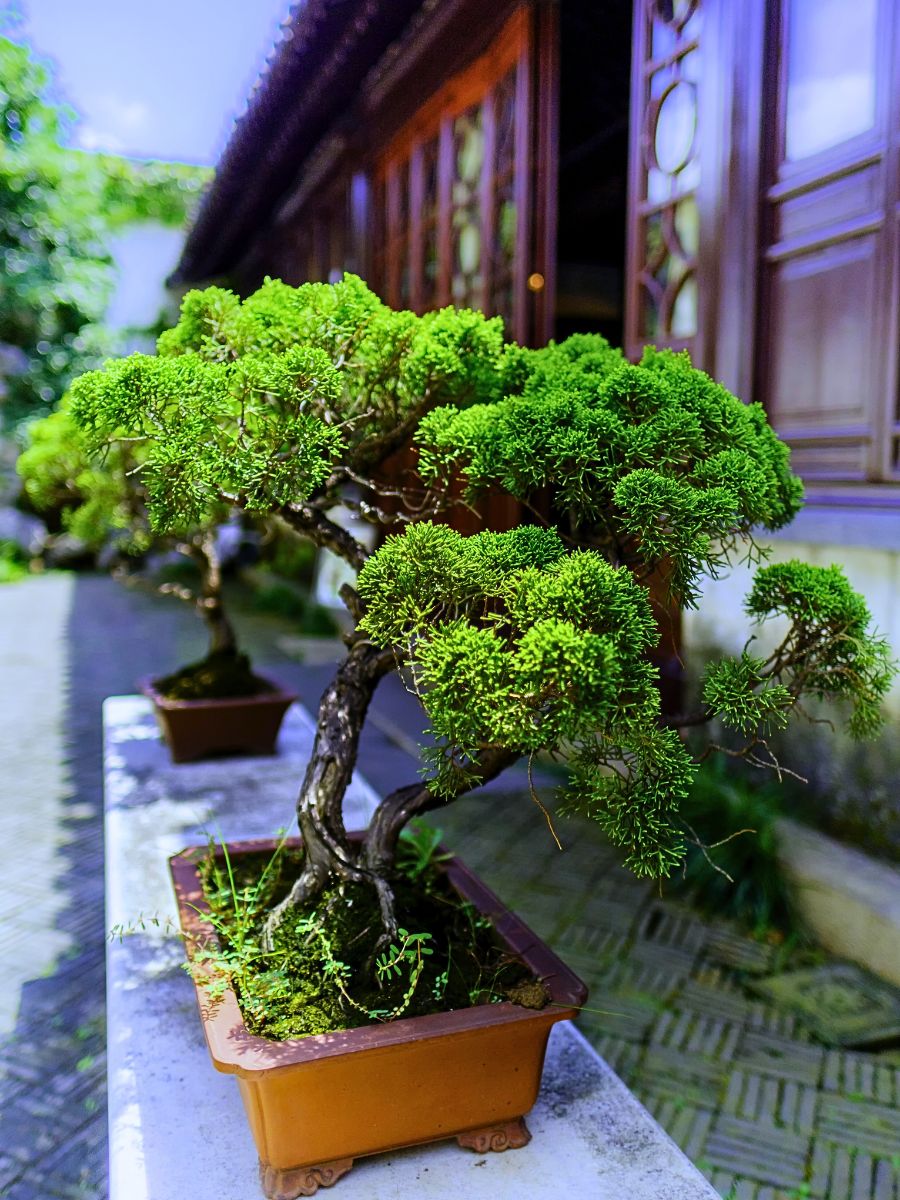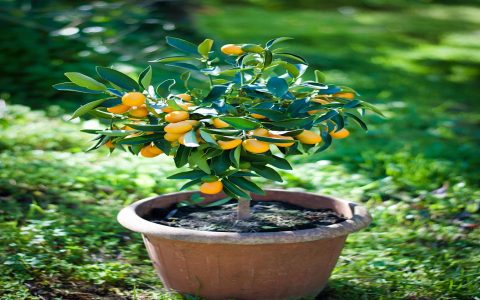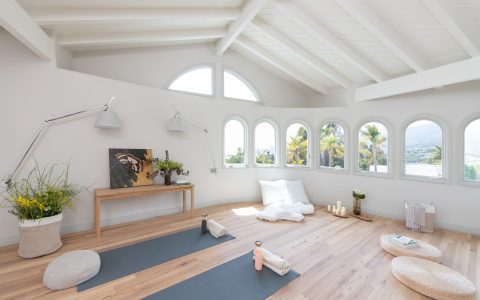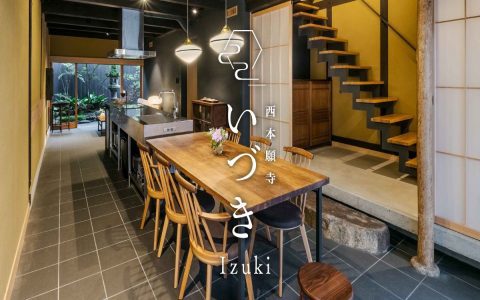Japanese indoor trees offer a unique blend of natural beauty and serene aesthetics, bringing a touch of traditional Japanese gardening principles into the home. Selecting the right species and understanding their care requirements is crucial for their success indoors.
Popular Japanese Indoor Tree Choices
- Bonsai Trees:
- Ficus Bonsai (e.g., Ficus retusa, Ficus ginseng): Highly adaptable, tolerant of lower light, and forgiving for beginners. They feature interesting aerial roots and glossy leaves.
- Carmona (Fukien Tea): Characterized by small, dark-green, glossy leaves and the ability to produce tiny white flowers year-round. Requires consistent humidity and warmth.
- Ulmus parvifolia (Chinese Elm): A semi-evergreen or deciduous tree with a fine twig structure and small, serrated leaves. Can be grown indoors with sufficient light, though it may benefit from a cooler period.
- Podocarpus macrophyllus (Buddhist Pine or Japanese Yew):
- Fatsia japonica (Japanese Aralia):
- Acer palmatum (Japanese Maple - selected for indoor/bonsai):
- Sago Palm (Cycas revoluta):
Bonsai is the art of growing miniature trees in containers. While many bonsai are outdoor species, several adapt well to indoor conditions. Popular indoor bonsai include:
Care: Bonsai require meticulous care. Watering frequency depends on species, pot size, and environment, generally when the topsoil feels slightly dry. They need bright, indirect light, often supplemented with grow lights indoors. Regular pruning is essential to maintain their miniature shape and aesthetic, and periodic repotting (every 2-5 years) is necessary to refresh soil and manage root growth.

This evergreen conifer features dense, leathery, dark green, needle-like foliage arranged spirally on its branches. It can be pruned into various formal or informal upright shapes and is relatively slow-growing, making it suitable for indoor cultivation over many years.
Care: Prefers bright, indirect light but can tolerate some lower light conditions, though growth may be less dense. Water thoroughly when the top inch or two of soil is dry, ensuring good drainage to prevent root rot. It is relatively drought-tolerant once established.
Known for its large, glossy, deeply lobed, palmate leaves that can span up to 12-16 inches across. Japanese Aralia brings a bold, architectural, and tropical feel. It can grow into a multi-stemmed shrub-like tree.
Care: Thrives in cool to average room temperatures and bright, indirect light. Direct, hot sun can scorch its leaves. Prefers consistently moist soil (but not waterlogged) and appreciates higher humidity levels; misting or a pebble tray can be beneficial.
While primarily outdoor trees, certain cultivars of Japanese Maple are cultivated as indoor bonsai or small potted trees. They are prized for their delicate, often finely dissected leaves and graceful branching structure. Achieving vibrant seasonal color indoors can be challenging.

Care: Requires bright, indirect light, and protection from drafts and sudden temperature changes. Soil should be kept consistently moist but well-drained. Many Japanese Maples require a period of winter dormancy with cooler temperatures, which can be difficult to provide consistently indoors, making them a more challenging indoor subject.
Though not a true palm but a cycad, its stiff, feather-like, dark green fronds emerge from a thick, shaggy trunk, creating a distinctive, ancient, and formal appearance often associated with Japanese gardens. It is very slow-growing.
Care: Needs bright, indirect light for optimal growth, though it can tolerate lower light for periods. Water thoroughly when the soil feels dry to the touch, allowing it to dry out somewhat between waterings. It is crucial to note that all parts of the Sago Palm are highly toxic to humans and pets if ingested.
General Care Considerations for Japanese Indoor Trees
Success with Japanese indoor trees often hinges on replicating aspects of their natural environment and adhering to mindful cultivation practices:
- Light: Most species prefer bright, indirect sunlight. An east-facing window is often ideal, providing gentle morning sun. South or west-facing windows may require sheer curtains to diffuse intense light. Insufficient light typically results in leggy growth, smaller leaves, and poor overall health.
- Watering: The cardinal rule is to avoid overwatering, which leads to root rot. Use pots with adequate drainage holes and a well-draining soil mix. Water thoroughly when the top layer of soil (1-2 inches) becomes dry, then allow excess water to drain away.
- Humidity: Standard home environments are often drier than these trees prefer, especially during winter when heating systems are active. Increase humidity by misting foliage regularly, grouping plants, using a pebble tray filled with water, or employing a room humidifier.
- Soil: A high-quality, well-draining potting mix is essential. For bonsai, specific bonsai soil formulations provide the necessary aeration and drainage. For other trees, a mix incorporating perlite, pine bark, or pumice can improve drainage.
- Pruning and Shaping: Regular, thoughtful pruning is key not only for plant health (removing dead or crossing branches) but also to maintain the desired size and aesthetic form, which is a hallmark of Japanese-style cultivation.
- Temperature: Average room temperatures (65-75°F or 18-24°C) are generally suitable. Avoid placing trees near cold drafts, direct heat sources (radiators, vents), or abrupt temperature fluctuations.
- Fertilization: Feed sparingly during the growing season (spring and summer) with a balanced liquid fertilizer or one specific to the plant type (e.g., bonsai fertilizer). Reduce or stop fertilization in fall and winter.
By understanding these specific needs and committing to attentive care, you can successfully cultivate a piece of Japanese botanical art within your home, creating a tranquil, inspiring, and natural focal point.








